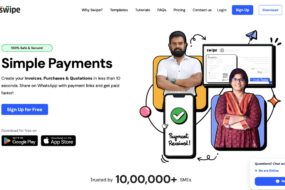
Customer retention programs have become increasingly more sophisticated from the early days of punch cards offering a free cup of coffee for every 10 the customer bought. Rewards program(s) have become far more diverse, creative and plentiful from those early days. Airlines, credit card companies, resorts and hotels, among numerous other industries, offer incentives that the customer has come to expect. And this is not a bad thing either. However, when beginning a rewards program, or even turbo-charging an existing one, it requires careful thought to remain innovative and competitive. After all, the whole purpose of a customer retention program is to satisfy existing customers while luring new ones in the process.
Incentivizing the Old and the New
There are many choices that intrigue and attract customers. Capturing their attention first, and commitment second, is the name of the game. Yet, what will work best for your particular company or industry? That is the million-dollar question. Does a discounted club card make the most sense? Will a points program that offers some kind of cash value to customers for products or prizes stimulate customer growth? Should you offer free shipping? Free items or a free service? Should you use subscriptions as a vehicle in which to provide incentives?
Even though industry-specific businesses help define a customary rewards program, there are some general strategies that are appealing and beneficial for nearly any kind of company. For example, customer retention requires far more than discounts these days. Because rewards programs have become commonplace, customers expect more and will take their business to those companies who provide more rewards, simple as that.
Providing Something Substantive
Providing customers’ things such as physical prizes, free trips, bonus miles or free hotel stays, and the like, are far more attractive than discounts alone. By definition, a discount is time-limited while earning miles or free hotel stays due to frequent/repeat business incentivizes customers to return so they can ‘earn more’ of what you are offering. In classic terms, it’s a win-win for everybody and extends the life cycle of the business-customer relationship.
In addition, brand ambiance can further incentivize customers to come back for more. Brand ambiance operates over and above (or in tandem with) core incentives. Starbucks is a classic example where earning points for more (free) coffee resides in a social environment that is pleasant, communal and shared. The trick is to select what incentivizes your business or industry most.
Do Your Homework
How do you decide what is relevant to your business? You must define what is most valuable in a customer retention program. By that we mean, ask yourselves, is customer tenure most valuable? Increased dollar-value purchases? Do you want to offer bonuses or upgrades? Additionally, you have to identify what your competition is doing. Does it work for them? If so, should you mirror their offerings to meet customer expectations or distinguish yourself by providing something innovative and new?
Nuances to Consider
A points earning rewards program requires multiple transactions as a foundation. Coffee, gas stations, even hotels for business travelers are all examples of this. The incentive is to retain and attract new customers to your brand as opposed to their purchasing what they would buy anyway but from someone else.
Some companies charge a fee (Barnes & Noble) to be in a rewards program. If you are considering this option, just know you have to make it worth the customer’s investment for the buy-in. Customers will exercise their own cost-benefit analysis and, if not offered enough for their investment in return, will be short termers or not be attracted at all.














